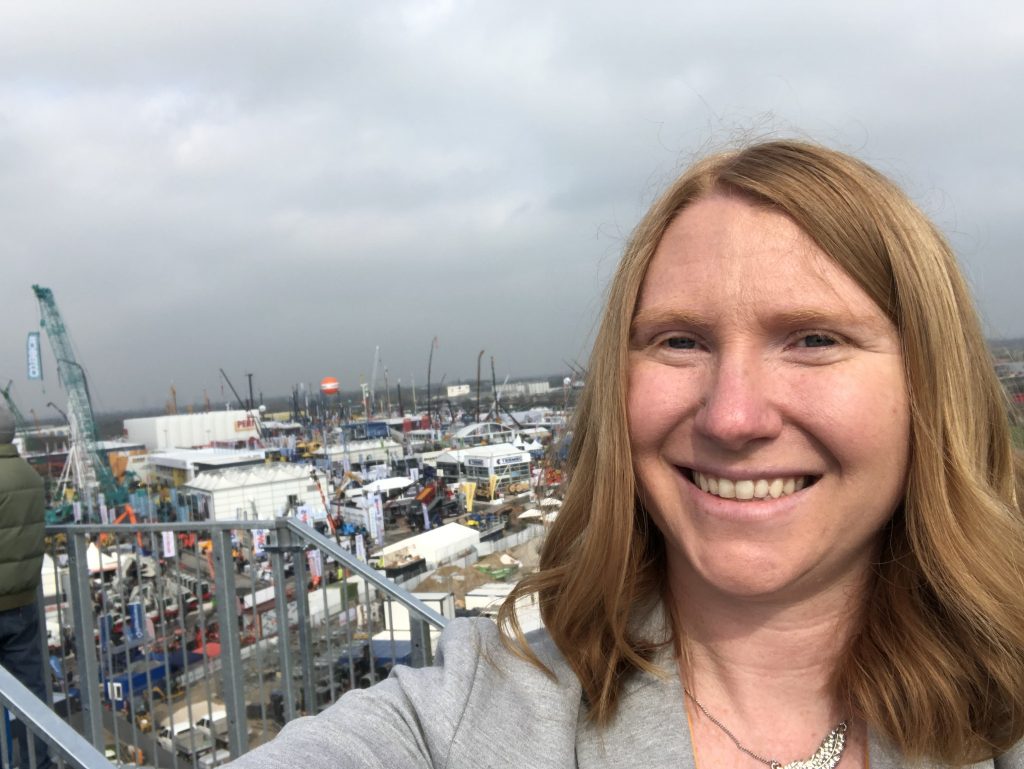901 Tower Drive • Suite 420 •
Troy, Michigan 48098
• P: 248.269.1122 •
E: bianchipr@bianchipr.com
901 Tower Drive • Suite 420 •
Troy, Michigan 48098
• P: 248.269.1122 •
E: bianchipr@bianchipr.com

After 11 years at a publication focused on the design of heavy-duty equipment, I have recently moved to the publication Power & Motion. As technical editor of Power & Motion I work with my fellow editors to create content – whether that be written, video or otherwise – focused on modern motion systems and their power sources including pneumatic, hydraulic, electric and hybrid. The publication recently went through a rebranding and expansion of its coverage areas; I am helping to formulate content around these expanded coverage areas to ensure our audience can stay up to date on the latest technology trends while also ensuring we continue to cover the technologies on which the brand was originally built as they are just as vital today even with the growth of electrification and other advanced technologies.
Note: Power & Motion was previously known as Pneumatics & Hydraulics. Since changing it’s title, the outlet now covers a wider range of topics, including electric and hybrid power.
Can you tell us what types of stories, trends or issues are on your radar now?
Electrification and automation continue to be big areas of focus for us. They are making their way into every component and application, bringing about some really interesting advancements and new solutions. On the electrification side, it has been interesting to see how it is being integrated with so-called traditional technologies like hydraulics as well as how those technologies are continuing to advance and remain a vital source of power even as electrification increases.
Describe the craziest or most fun story you have written.
Not much on the crazy side, yet, but as far as most fun stories…it’s hard to choose because they’re all fun in some way. But if I have to pick one, I think it would be the articles I have written about the U.S. Dept. of Energy’s SuperTruck program. This program is fascinating to me because it provides an opportunity for companies’ engineering teams to come together to research and develop technologies which will help reduce emissions and improve fuel efficiency of heavy-duty trucks. While collaboration isn’t unusual in the engineering space, it’s still fascinating to see it in action and the fruits of those labors – many interesting solutions were developed, some of which have even made it to market. It’s also nice to see programs like this where engineers have the opportunity to be a little more creative with their designs because they know the end result is for demonstration purposes, but could help lead to future solutions. And the program is still going which I think is grat; a third iteration is set to start soon with new goals and some of the same companies still participating. My first article on the project also holds a special place in my memory as it was the first big article I wrote after I started in B2B journalism in which I had come up with the idea and it wound up being the cover story for a print issue.
What story or stories are you most proud of?
Those in which I have been able to really dedicate some time to research and dig into the topic; while we obviously research everything we do we all seem to have less time these days and need to turn content around at a faster pace. When you have the chance to really dive into a topic and get in the weeds, that’s usually when I feel best about the end result.
What elements or characteristics do you look for in a story?
Since technology is the main focus for my publication, obviously any new technology is going to be of interest. But just finding a unique angle or learning about how one little design change brought about new benefits can make for an interesting story. Application stories are always great too – learning how a technology was actually implemented and used in an application can really help to understand how it works.

How long have you been in journalism and how did you get started?
I got my start in journalism working for my college newspaper…but professionally it’s been 11 years now and I actually got my start because a friend from college referred me to an open position at her company, and I’ve been in B2B ever since.
Finish this sentence: If I am not reporting, I am …
Spending time with my fiancé (or husband depending on when this publishes) and our two adorable, but crazy cats. We like to hike, play board games, visit our local breweries.
What advice do you have for PR people that want to pitch you?
I think one of the biggest things they can do is make sure what they are pitching is applicable to the publication. Many do, but there are also many that send something which has nothing to do with your publication. Take a little time to look at the publication’s website and what is covered. It’s okay to ask if you’re not sure if it’s applicable, but too often it’s clear the PR person did not bother even taking a glance at the pub’s website to see if there’s a chance of applicability…that’s a fast way to wind up immediately in the Deleted Items folder.
Also, getting directly to the pitch/point of the piece in the first couple of sentences. Again, we all have a lot on our plates these days (PR folks included) and having to read through a long email just to get to the point is cumbersome and not helpful to a journalist.
Any pet peeves with PR people?
Too many sequential follow up calls or emails…everyone is busy, give us a little time to review and think on your pitch.
You can read more about Sara’s appointment to Power & Motion here: Sara Jensen to Lead Power & Motion
You can follow Sara and Power & Motion on social media:
Twitter:
LinkedIn: